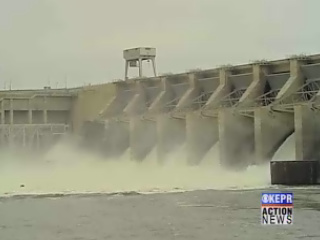forum
library
tutorial
contact

PR Masquerading as Science
Won't Help Environmentalists
by Norm SemankoIdaho Statesman, April 19, 2009
|
the film forum library tutorial contact |

|
PR Masquerading as Science
by Norm Semanko |
 Desperate environmentalists have resorted to a "Hail Mary" public relations ploy in their misguided attempts to find support for breaching the four lower Snake River dams.
Desperate environmentalists have resorted to a "Hail Mary" public relations ploy in their misguided attempts to find support for breaching the four lower Snake River dams.
They have ranked the Snake River third on their made-up "endangered river" list. The Snake didn't even make the list last year. Apparently they hope the Obama administration will react in terror, toss or ignore a decade of substantial, verifiable salmon recovery progress and magically give them another shot at breaching the dams.
Please! Even the Idaho Statesman's editorial editor - one of Idaho's most dedicated breaching proponents - writes that it "reflects P.R. maneuvering" and admits that there is nothing really new in the debate.
Not hard to understand that, considering the Idaho Department of Fish and Game is predicting the largest chinook salmon return since 2001. Or that practically every indicator now points toward improving salmon recovery conditions.
For more than a decade environmentalists have struggled in vain to find something to which they can latch their dam breaching agenda. Good science has proven to be their worst enemy. At every turn it has discredited their assertions and refuted their allegations.
When all else fails, try a public relations stunt. Better yet, make sure it contains manufactured numbers such as the blatantly untrue claim that the four lower Snake dams kill as many as 90 percent of juvenile salmon and steelhead as they migrate downstream to the ocean.
For the record: A 2008 NOAA Science Center report presented to the Northwest Power and Conservation Council revealed 12 percent mortality through the four Snake dams for chinook salmon and 23 percent mortality through those dams for steelhead. Hardly the 90 percent claimed by the enviros.
Ultimately, the environmentalists appear to hope their latest PR move will prompt the Obama administration to move toward convening a regional salmon recovery summit, a vehicle they can use to reopen the regional debate on salmon recovery.
As we saw with Sen. Mike Crapo's effort in 2003, a discussion table can only be created if the environmental groups are willing to cooperate. In that case, everyone else - Idaho irrigators included - were willing to talk. But the environmentalists made it clear that they wanted to seek control of Idaho's water in federal court instead.
A regional summit is not warranted unless and until the environmentalists show signs of willingness to cooperate and deal in good faith. And the best way to do that, plain and simple, is to abandon their misuse - and abuse - of the federal court system. That means no more attacks leveled at Idaho's water.
To gain a seat at the table, the environmentalists also need to recognize the strides that have been made - the historic Nez Perce Agreement, the regional fish accords with the tribes and states, increased funding dedicated to improving fish runs, and the increased fish numbers.
We are already into the second year of the 10-year regional plan - virtually everyone else in the region has agreed to this 10-year plan - and we are into the sixth year of the Nez Perce agreement. These measures - aided by favorable ocean conditions - appear to be working; rather than litigating, let's make sure the resources are made available to ensure success. This requires dropping the legal challenges.
If this good faith step can be taken, including respect for the agreements that have already been brokered - rather than engaging in this latest P.R. campaign - then maybe folks will be willing to sit down and discuss where things go from here. Until then, the environmentalists have no ground to stand on.
Related Sites:
Endangered Rivers Report by American Rivers
learn more on topics covered in the film
see the video
read the script
learn the songs
discussion forum
